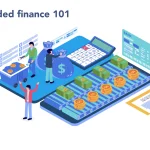
Let’s be honest—banks aren’t exactly winning any popularity contests these days. Between endless paperwork, sky-high interest rates, and that sinking feeling when your loan application gets denied, it’s no wonder people are turning to peer-to-peer (P2P) lending platforms for a fresh alternative. But is it really the financial revolution it claims to be? Or just another high-risk gamble dressed up as innovation?
What Exactly Is Peer-to-Peer Lending?
Imagine a digital marketplace where regular folks lend money to other regular folks—no stuffy bank lobby, no middleman taking a hefty cut. That’s P2P lending in a nutshell. Platforms like LendingClub, Prosper, and Funding Circle connect borrowers with individual investors, often offering better rates than traditional banks. Sounds dreamy, right? Well, sure—but there’s always a catch.
The Rewards: Why P2P Lending Is Gaining Traction
1. Higher Returns for Investors
Forget measly 0.5% savings account interest. P2P platforms often promise annual returns between 5% and 10%—sometimes even higher for riskier loans. That’s like turning your spare cash into a mini ATM… if everything goes according to plan.
2. Lower Interest Rates for Borrowers
Need a personal loan but dread the bank’s 15% APR? P2P borrowers with decent credit can snag rates as low as 6-8%. For small businesses shut out by traditional lenders, it’s often the only lifeline available.
3. Speedy, Tech-Driven Process
No more waiting weeks for approval. Many P2P platforms use AI to assess applications, funding loans in as little as 24 hours. It’s banking at the speed of, well, the internet.
The Risks: The Fine Print You Can’t Ignore
1. Default Rates Are Higher Than You Think
Here’s the ugly truth: 3-10% of P2P loans default, depending on the borrower’s credit tier. Unlike FDIC-insured savings, your money could vanish if too many borrowers ghost their payments.
2. Limited Regulatory Protections
The SEC oversees P2P platforms, but let’s just say the rules aren’t as ironclad as traditional banking. If a platform goes under—cough Lendy cough—you might be left holding an empty bag.
3. Liquidity? What Liquidity?
Unlike stocks, you can’t just sell your P2P loans on a whim. Most platforms lock your money in for 3-5 years. Need cash fast? Tough luck.
P2P Lending vs. Traditional Loans: A Quick Comparison
| Factor | P2P Lending | Traditional Loans |
| Interest Rates | 5-36% (varies by risk) | 4-20% (often higher for bad credit) |
| Approval Time | 1-7 days | Weeks to months |
| Default Risk | Investor bears full risk | Bank absorbs losses (mostly) |
| Regulation | Light oversight | Heavy federal oversight |
Who Should (and Shouldn’t) Dive Into P2P Lending
Good fit: Seasoned investors who understand risk, borrowers with decent credit but bank-averse, those seeking portfolio diversification.
Bad fit: Anyone who panics at market dips, people needing FDIC-level security, those who can’t afford to lose the invested amount.
The Bottom Line: Is It Worth the Hype?
P2P lending isn’t some magical money tree—it’s a tool. Like any tool, it works brilliantly in the right hands and disastrously in the wrong ones. The real question isn’t whether it’s “good” or “bad,” but whether you can stomach the rollercoaster ride for potentially higher rewards.






